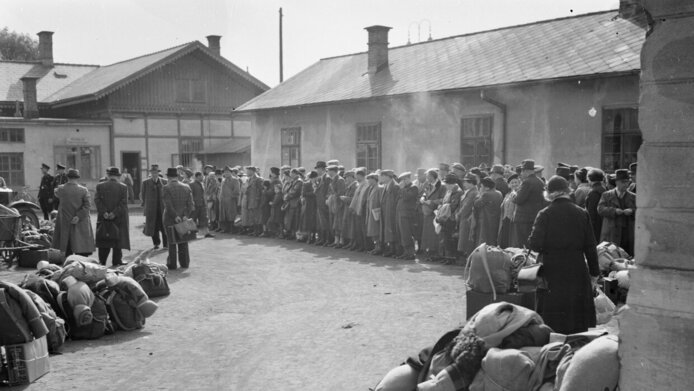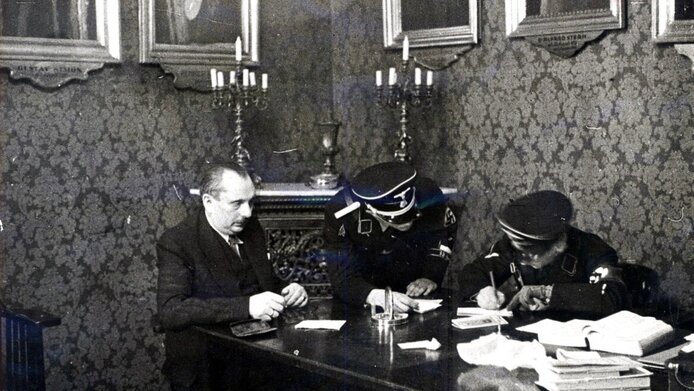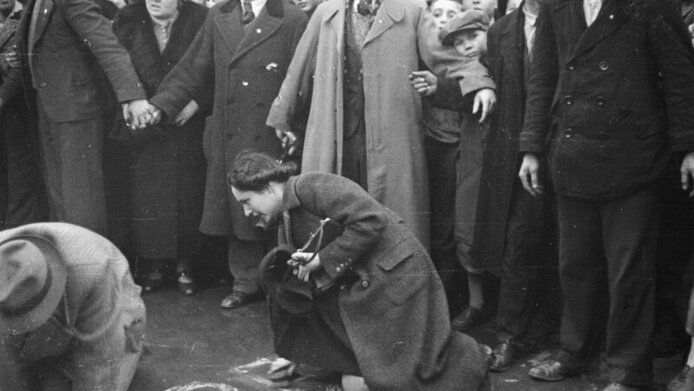Historical knowledge supplemented by Jewish perspective

About two months after its offices were closed by the National Socialists on 18 March 1938, the Jewish Community of Vienna was reopened in May under a changed name (Jüdische Gemeinde Wien instead of Isreaelitische Kultusgemeinde Wien). From that point onward, however, their activities were under the control of the Nazi regime. The lawyer and Zionist activist Josef Löwenherz was first arrested, but later appointed to serve as the Community’s director until the end of the war. Researchers have now been able for the first time to trace how he saw the situation of the Jewish population: the activity reports he wrote were among the documents screened in the context of a research project.
Collective and individual experiences
“The reports are a very authoritative source. You can see how the situation became more and more critical, you feel the distress, but also his commitment to the people concerned”, says historian Eleonore Lappin-Eppel from the Institute of Cultural Studies and Theatre History at the Austrian Academy of Sciences. The question asked by Löwenherz “What are we to do with them?”, for instance, illustrates the problems that arose from the mass deportation of the Jewish population of Vienna. A growing number of mostly impoverished refugees from all over Austria very soon swelled the ranks of the Viennese homeless. The research project aims to produce a two-volume source edition, with the first volume to be published in spring 2019. The publication of previously unpublished sources reflects the experience and perception of the events from the Jewish population's standpoint: from the Anschluss to the phase of deportation and the closing down of communities and, finally, annihilation. There is a wide spectrum of documents, ranging from official sources stemming from Jewish organisations and communities, such as the activity reports mentioned above, to personal items such as letters, diaries and interviews. The fact that the publication covers the situation throughout Austria is also new.
Things went differently in different places
A look at the whole of Austria shows that the enforcement of Nazi ideology depended very much on the local Nazi leaders and, despite regional differences, also reveals a systematic approach. As early as 1940, most Jewish communities in the Austrian provinces, with the exception of those in Graz, had been closed down. Many members fled to Vienna and several, albeit not all, provincial Jewish communities set up branch offices in the capital to support them. “Compared to the rest of Austria, the brutal expulsion began particularly early in Burgenland. The Burgenland Jews, however, organised themselves very quickly in Vienna and supported those seeking help for emigration. In this way, a disproportionately large number of them could be saved”, explains Lappin-Eppel. Outside of Vienna, the availability of sources varies greatly. In addition to examining the archives of the Jewish Community of Vienna, the provincial archives and the Documentation Archive of the Austrian Resistance, Lappin-Eppel also conducted research in the most important archives in Israel and the USA.
Reading between the lines
A central question in drawing up the source edition is the informative value of both official and personal sources. According to Lappin-Eppel, only the most significant, plausible and authentic sources were used for the two volumes, which together cover the period from the Anschluss pogrom to the end of World War II. The researchers had to be particularly vigilant as to authenticity. In many cases, official sources are reports to Nazi authorities. The authors were under duress, but they also wanted to improve the situation of the Jewish population. In the case of personal sources such as letters or diary entries, a great deal of information was encoded because people feared the Nazi authorities. The code was frequently concealed in the signature. “We have also analysed letters from parents to their children who had been able to flee. These letters even had double coding. They are particularly valuable to us because those people have never had a voice before”, notes Lappin-Eppel in the interview with scilog.
New findings on November pogrom
The focus on the Jewish perspective also supplied new insights about the November pogrom. The overall Austrian perspective revealed regional differences, for example when it came to setting fire to synagogues. “Targeted murders, as ordered by the Gauleitung (district Nazi leadership) in Innsbruck, only occurred there. But brutal acts of violence, including murder, also happened elsewhere”, says the researcher in summing up. What was also striking to her was the comprehensive cooperation of aid organizations of different religious affiliations and world views. The “Episcopal Help Centre for non-Aryan Catholics” in the Archbishop's residence was, however, the only such organisation able to work right through until the end of the war. By cataloguing and systematising the sources of the Jewish population from an overall Austrian perspective, the researcher created a sound basis for new research avenues. In addition, the publication gives a voice to the Jewish population, for instance to a sixteen-year-old boy who observed others being forced to scrub the streets and who, according to the researcher, “deliberately pokes fun at this in his diary record, probably in an attempt to preserve his own dignity”.
Personal details Eleonore Lappin-Eppel has been doing research at the Institute of Cultural Studies and Theatre History of the Austrian Academy of Sciences since 2010. Prior to that, she held a position at the Institute for Jewish History in Austria for many years. She completed her studies in the USA and Israel. Most recently she led a research project on memorial sites of the destroyed Jewish Vienna: www.topographie-der-shoah.at
Project website: Responses to Persecution: Documenting Life and Destruction in the Holocaust
Publication (in German)







